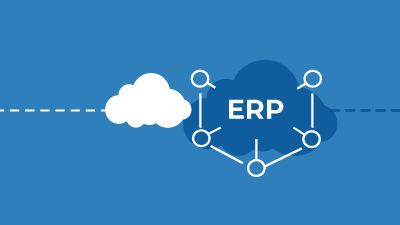Into the Hands of Your Customers: The Ecommerce Pick-Pack-Ship Process
Attention. Interest. Decision. Action. If you run an eCommerce site, you already know how hard it is to get a customer through these phases.
Posts by:

Attention. Interest. Decision. Action. If you run an eCommerce site, you already know how hard it is to get a customer through these phases.

The service technician will be there between two and four. Uh huh… We’ve all been there. Sometimes, the tech arrives at 4:30, or the next day. It seems unavoidable, but it isn’t. Plus, it’s one thing to wait for your fridge to get fixed. It’s another when a multi-million-dollar piece of equipment is down. You want to know when that tech is coming. In fact, you may even have a contract that specifies how quickly he or she is going to arrive with the repair kit.

Predictions for the coming year are a staple of the blogging-industrial complex. You’ll surely see a lot of them around this time of year. The challenge, though, with prognosticating about manufacturing for the coming year is to differentiate between common trends and truly new forces that will affect how manufacturers function and make money. Competition is a given. Changing customer expectations are a given. What’s coming in 2020 that will have an impact? Where will cloud ERP make a difference? At Cloud 9 ERP Solutions, we understand the challenges that manufacturers face, so here are some of our thoughts on 2020 manufacturing industry trends.

During Thanksgiving, many of you will have gathered with family and friends and considered what you are thankful for in your own life. However, the holiday is great a opportunity for the business community to count its blessings too.

For some businesses, the end of the year is the busy season. For the rest of us, the closing weeks of 2019 will probably be pretty quiet. It’s a great moment to think about what you want to achieve in 2020. You can get your 2020 plans organized before taking a little well-deserved time off. This period of time also offers an opportunity to take a clear-eyed look at your current Enterprise Resource Planning (ERP) system and ask yourself if it is not, at long last, time to make a change.

Like the popular credit card commercials that ask, “What’s in your wallet?” a good ERP solution provider should ask, “What’s in your factory?” Having worked with many manufacturing customers over the years, we can confidently say that no two are quite alike. Some produce millions of items that cost a few cents each. Others produce a single product, like a locomotive or a jet engine that sells for millions of dollars. There’s make-to-order, make-to-inventory and project shops. Some manufacturers only make one thing over and over, like companies who produce thousands of miles of copper wire every day.

Drop shipping is an important part of the supply chain process for eCommerce businesses. The retailer does not need to have a product in its inventory. Instead, they can transfer customer orders to another retailer, the manufacturer or wholesaler, which then ships the order directly to its destination.

Looking ahead to 2020, one can see many trends shaping the food industry, beyond consumers looking for healthier, more environmentally friendly products. Consumer demand for quality and sustainability, along with increasing costs, are creating challenges for food industry organizations. An advanced cloud ERP system like Acumatica can help food businesses address some of the most significant issues looming in the near future. Here are the highlights:

An ERP migration or implementation can be somewhat disruptive. Not pursuing an upgrade comes at a high price, too, unfortunately. Continuously weighing the costs versus benefits can delay implementing the latest update. And, it’s now Q4. Hard to believe… but business applications are becoming increasingly sophisticated. If it’s been some time since your organization has upgraded its ERP system, here are six reasons not to wait.

Friends who go out to eat often split the check. “You ordered the chicken. You owe me ten bucks…” and so forth. Businesses have a similar process. It’s called intercompany accounting. Instead of figuring out who owes what for the chicken, but not the drinks, companies often have separate business units paying for things and accepting payment on behalf of other business units.